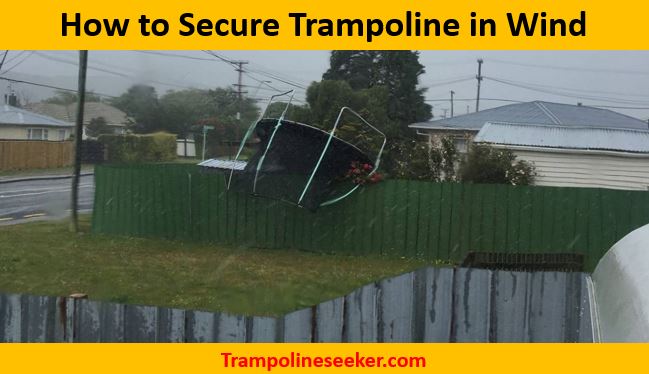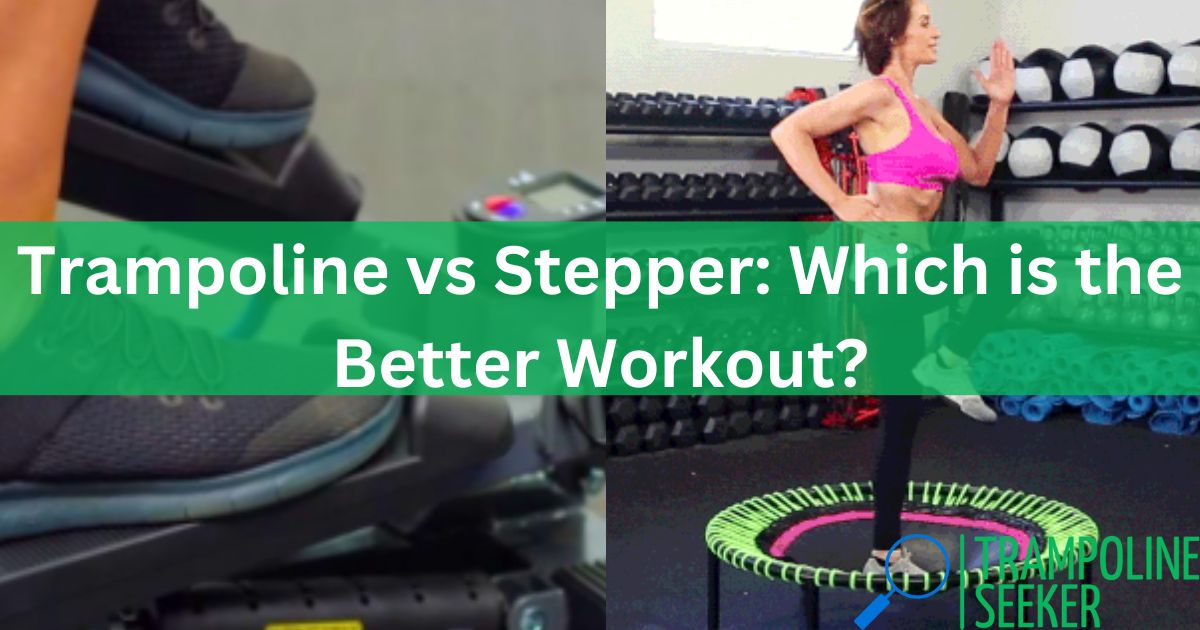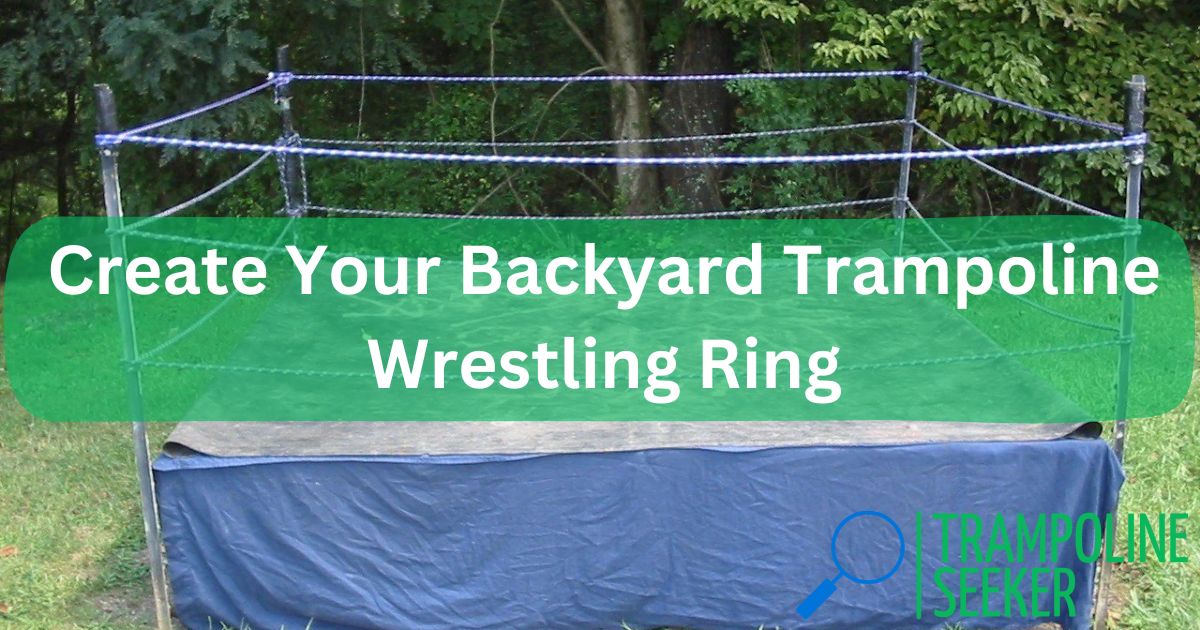Trampolines are incredibly fun, but what happens when you add water to the mix? Does it affect the bounce or performance? Is it safe to jump on a wet trampoline? Could water damage the springs, mat or frame over time? These are common questions for trampoline owners dealing with rain, sprinklers, or enthusiastic kids with Super Soakers. 😅
The short answer is: Yes, water can damage trampolines if exposed repeatedly over long periods or in extreme weather. But occasional light rain or sprinkler play is generally fine.
As an experienced trampoline jumper and reviewer, I have done extensive research on this topic. 🧐 In this comprehensive guide, I will provide a detailed, nuanced answer on how water interacts with various trampoline components, safety considerations for wet trampolines, and tips to prevent or minimize water damage. 💧🌧️🚫
Can You Safely Jump on a Wet Trampoline?
Jumping on a damp trampoline during or after light rain, or while playing with a sprinkler or misting system can be fun summer activity. 🤩☀️🚿 However, it does come with some safety considerations.
The main risk is increased slipperiness on wet surfaces leading to falls or collisions. This applies to the jumping mat, enclosure netting, any ladders/stairs, and the surrounding ground area.
Tips for Safe Playtime
When allowing playtime on a wet trampoline, keep these rules in mind:
- Only allow 1 jumper at a time, especially on smaller trampolines
- Limit flip tricks and overly bouncy moves
- Ensure spring padding fully covers frame and hooks
- Attach protective enclosure netting around mat edge
- Help kids climb ladder carefully
- Provide soft ground covering under trampoline
Also refrain from jumping during intense rainstorms with lightning or high winds that could damage the trampoline or surroundings.
And never jump on a trampoline with standing water pooled on the mat, as it could strain the weight limits of the materials.
Does a Wet Trampoline Increase Bounce Height?
Some speculate that water makes trampolines more bouncy. The reasoning is that either:
- Water acts as a lubricant allowing fabrics to stretch farther
- Extra downward force is created when water is left behind on downward bounces
However, my testing shows wet trampolines provide a very similar bounce to dry ones. Any minor differences would be negligible.
Attempting risky flips for slightly higher air would still be dangerous on slick surfaces. For safe bounce boosting, consider other methods like rebounding socks.
Can Jumping on Wet Trampolines Cause Damage?
Occasional light wetness from sprinklers or brief rain is generally harmless. But consistent heavy water exposure can damage components like mats, springs and frames over time depending on materials used.
Trampoline frames are typically made of rust-resistant galvanized steel. But constant moisture speeds up oxidation leading to rust corrosion, especially in cold climates.
Springs can start to degrade and lose bounciness first. So ensure spring padding keeps these protected.
Vinyl or polypropylene mats won’t absorb liquid. But leaves/debris can get trapped in stitching during storms. And pooled water adds weight possibly overstraining materials.
So while brief wetness won’t instantly destroy a quality trampoline, excessive rain or negligence towards proper care will cut its usable lifespan.
Protecting Your Trampoline from Excess Moisture
While trampolines are built for outdoor use, precautions to minimize rust and wear-and-tear are still a good idea. Here are some protective accessories to consider:
Weatherproof Spring Padding
Snug padding around frame and hooks prevents direct rain contact. It also safeguards bouncees.
Water-Repellent Trampoline Cover
Fully enveloping cover shields the mat and attachments when not in use. Keeps out debris too. Be sure to dump standing water if it pools.
Brush Off Debris
Prevent decomposing leaf litter from embedding in mat. Rake and sweep off the surface periodically.
Move Indoors or Under Awnings for Extreme Weather
If expecting severe storms, heavy snow, or long droughts it may be wise to relocate the trampoline or cover with waterproof tarps secured tightly.
Special Considerations for Water Trampolines
If you have access to a large body of water like a lake or pool, a floating water trampoline can provide literal big waves of fun! 🌊🏖️

My top tips for safe, enjoyable water trampoline ownership include:
- Choose durable marine-grade construction materials
- Anchor securely in place
- Follow weight capacity limits
- Watch for shiftings currents, storms or tides
- Take out of water and store away in off seasons
- Check for leaks, hull dents or ripped netting before reinstalling
With conscientious care and maintenance, a water trampoline can provide hours of wet and wild bouncing excitement year after year! 💦
Common Water Trampoline Safety Questions
Is it safe for non-swimmers?
Life jackets and supervision recommended. Consider removable fencing around perimeter.
Can it flip over?
Proper anchoring prevents drifting or tipping. Don’t exceed weight limits.
Is there risk of drowning?
Drowning unlikely if flotation is intact. But active supervision is still essential, especially for young jumpers.
Conclusion
To wrap up, an occasional light drizzle or playing with sprinklers generally won’t damage quality trampolines built for outdoor elements. But consistent heavy exposure can degrade components over time if preventative care is not taken. 🏠 ☔
Limit wet playtime risks with safe jumping rules, weather shields and by regularly checking equipment for wear. With reasonable precautions, your trampoline can provide happy hopping fun rain or shine! Now go bounce to your heart’s content! 🙌
Frequently Asked Questions
Still have more questions about trampolines and water? Here are answers to some commonly asked queries:
Can trampolines get wet?
Yes! Trampolines are designed for outdoor use and can withstand normal weather conditions including occasional rain or sprinkler water contact. But allowing water to pool deeply or remain for excessively long periods can eventually damage components.
How do you dry a wet trampoline?
On sunny days open any protective coverings to allow light and air movement to evaporate moisture. You can gently push upwards on the mat middle from beneath to displace pooled water over the edges. Completely drying out the trampoline between uses preserves longevity.
Do weather covers protect trampolines?
Quality weather covers provide excellent shielding by fully enveloping the entire trampoline while not in use. This keeps rain, leaves, debris and other excess moisture from prolonging contact with springs, mat and frame. Just remember to empty any standing water if spotted underneath.
Articles You May Like to Read:













